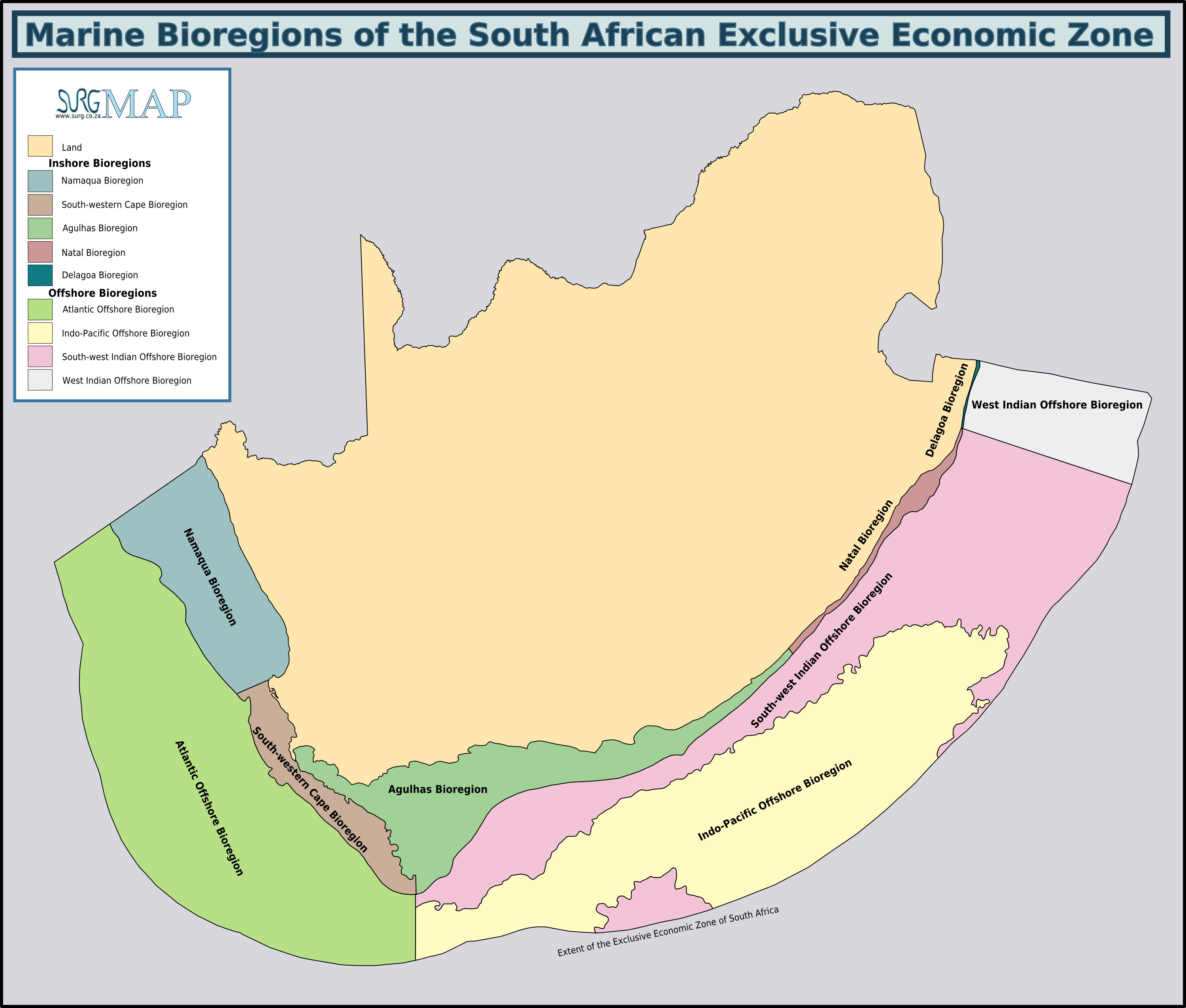|
Curtis Marean
Curtis W. Marean is a professor of archaeology at Arizona State University. In a 2010 article in ''Scientific American'', Marean explained how anatomically modern humans survived the MIS 6 glacial stage 195-123 thousand years ago, a period during which the human population was limited to only a few hundreds breeding individuals. During this period, sea levels dropped more than a hundred meters and the sloping South African Agulhas Bank was transformed into a plain on which humans could survive on shellfish and wash-ups from the sea. He is currently the associate director of the Institute of Human Origins in Tempe, Arizona. See also * Pinnacle Point Pinnacle Point a small promontory immediately south of Mossel Bay, a town on the southern coast of South Africa. Excavations since the year 2000 of a series of caves at Pinnacle Point have revealed occupation by Middle Stone Age people between ... References External links * American archaeologists Year of birth mis ... [...More Info...] [...Related Items...] OR: [Wikipedia] [Google] [Baidu] |
Archaeology
Archaeology or archeology is the scientific study of human activity through the recovery and analysis of material culture. The archaeological record consists of artifacts, architecture, biofacts or ecofacts, sites, and cultural landscapes. Archaeology can be considered both a social science and a branch of the humanities. It is usually considered an independent academic discipline, but may also be classified as part of anthropology (in North America – the four-field approach), history or geography. Archaeologists study human prehistory and history, from the development of the first stone tools at Lomekwi in East Africa 3.3 million years ago up until recent decades. Archaeology is distinct from palaeontology, which is the study of fossil remains. Archaeology is particularly important for learning about prehistoric societies, for which, by definition, there are no written records. Prehistory includes over 99% of the human past, from the Paleolithic until the adven ... [...More Info...] [...Related Items...] OR: [Wikipedia] [Google] [Baidu] |
Arizona State University
Arizona State University (Arizona State or ASU) is a public research university in the Phoenix metropolitan area. Founded in 1885 by the 13th Arizona Territorial Legislature, ASU is one of the largest public universities by enrollment in the U.S. One of three universities governed by the Arizona Board of Regents, ASU is a member of the Universities Research Association and classified among "R1: Doctoral Universities – Very High Research Activity". ASU has nearly 150,000 students attending classes, with more than 38,000 students attending online, and 90,000 undergraduates and nearly 20,000 postgraduates across its five campuses and four regional learning centers throughout Arizona. ASU offers 350 degree options from its 17 colleges and more than 170 cross-discipline centers and institutes for undergraduates students, as well as more than 400 graduate degree and certificate programs. The Arizona State Sun Devils compete in 26 varsity-level sports in the NCAA Division I Pac ... [...More Info...] [...Related Items...] OR: [Wikipedia] [Google] [Baidu] |
Scientific American
''Scientific American'', informally abbreviated ''SciAm'' or sometimes ''SA'', is an American popular science magazine. Many famous scientists, including Albert Einstein and Nikola Tesla, have contributed articles to it. In print since 1845, it is the oldest continuously published magazine in the United States. ''Scientific American'' is owned by Springer Nature, which in turn is a subsidiary of Holtzbrinck Publishing Group. History ''Scientific American'' was founded by inventor and publisher Rufus Porter (painter), Rufus Porter in 1845 as a four-page weekly newspaper. The first issue of the large format newspaper was released August 28, 1845. Throughout its early years, much emphasis was placed on reports of what was going on at the United States Patent and Trademark Office, U.S. Patent Office. It also reported on a broad range of inventions including perpetual motion machines, an 1860 device for buoying vessels by Abraham Lincoln, and the universal joint which now can be found ... [...More Info...] [...Related Items...] OR: [Wikipedia] [Google] [Baidu] |
Anatomically Modern Humans
Early modern human (EMH) or anatomically modern human (AMH) are terms used to distinguish ''Homo sapiens'' (the only extant Hominina species) that are anatomically consistent with the range of phenotypes seen in contemporary humans from extinct archaic human species. This distinction is useful especially for times and regions where anatomically modern and archaic humans co-existed, for example, in Paleolithic Europe. Among the oldest known remains of ''Homo sapiens'' are those found at the Omo-Kibish I archaeological site in south-western Ethiopia, dating to about 233,000 to 196,000 years ago, the Florisbad site in South Africa, dating to about 259,000 years ago, and the Jebel Irhoud site in Morocco, dated about 315,000 years ago. Extinct species of the genus ''Homo'' include ''Homo erectus'' (extant from roughly 2 to 0.1 million years ago) and a number of other species (by some authors considered subspecies of either ''H. sapiens'' or ''H. erectus''). The divergence of ... [...More Info...] [...Related Items...] OR: [Wikipedia] [Google] [Baidu] |
Marine Isotope Stage
Marine isotope stages (MIS), marine oxygen-isotope stages, or oxygen isotope stages (OIS), are alternating warm and cool periods in the Earth's paleoclimate, deduced from oxygen isotope data reflecting changes in temperature derived from data from deep sea core samples. Working backwards from the present, which is MIS 1 in the scale, stages with even numbers have high levels of oxygen-18 and represent cold glacial periods, while the odd-numbered stages are lows in the oxygen-18 figures, representing warm interglacial intervals. The data are derived from pollen and foraminifera (plankton) remains in drilled marine sediment cores, sapropels, and other data that reflect historic climate; these are called proxies. The MIS timescale was developed from the pioneering work of Cesare Emiliani in the 1950s, and is now widely used in archaeology and other fields to express dating in the Quaternary period (the last 2.6 million years), as well as providing the fullest and best data ... [...More Info...] [...Related Items...] OR: [Wikipedia] [Google] [Baidu] |
Agulhas Bank
The Agulhas Bank (, from Portuguese for Cape Agulhas, ''Cabo das Agulhas'', "Cape of Needles") is a broad, shallow part of the southern African continental shelf which extends up to south of Cape Agulhas before falling steeply to the abyssal plain. It is the ocean region where the warm Indian Ocean and the cold Atlantic Ocean meet. This convergence leads to treacherous sailing conditions, accounting for numerous wrecked ships in the area over the years. However, the meeting of the oceans here also fuels the nutrient cycle for marine life, making it one of the best fishing grounds in South Africa. Extent and characteristics South African marine ecoregions from the 2011 classification The Agulhas Bank stretches approximately along the African coast, from off Cape Peninsula (18°E) to Port Alfred (26°E), and up to from it. The bank slopes down relatively steeply from the coast to about deep and reaches before dropping steeply to on its southern edge. The shelf spans a ... [...More Info...] [...Related Items...] OR: [Wikipedia] [Google] [Baidu] |
Institute Of Human Origins
The Institute of Human Origins (IHO) is a non-profit, multidisciplinary research organization dedicated to the recovery and analysis of the fossil evidence for human evolution. It was founded by the team of paleoanthropologists that discovered Lucy, and became affiliated with Arizona State University in 1997. In 2014, IHO received the single largest grant dedicated to the research of human origins. Origins After finding Lucy during the "surge of discoveries" in the 1970s, Donald Johanson returned to Berkeley, California and founded the Institute of Human Origins with the mission of bridging social, earth, and life science approaches to the most important questions concerning the course, causes, and timing of events in the human career over deep time. Research and discoveries Fossil record of the earliest human evolution Ledi-Geraru is one of IHO's fieldwork sites in the fossil-rich Afar Region of Ethiopia. In 2013, graduate student Chalachew Seyoum discovered the lower mandible k ... [...More Info...] [...Related Items...] OR: [Wikipedia] [Google] [Baidu] |
Tempe, Arizona
, settlement_type = City , named_for = Vale of Tempe , image_skyline = Tempeskyline3.jpg , imagesize = 260px , image_caption = Tempe skyline as seen from Papago Park , image_flag = Tempe, Arizona official flag.png , seal_size = , image_map = File:Maricopa County Arizona Incorporated and Unincorporated areas Tempe Highlighted 0473000.svg , mapsize = 250px , map_caption = Location of Tempe in Maricopa County, Arizona , image_map1 = , mapsize1 = , map_caption1 = , pushpin_map = Arizona#USA , pushpin_map_caption = Location in Arizona##Location in the United States , pushpin_relief = 1 , coordinates = , subdivision_type = L ... [...More Info...] [...Related Items...] OR: [Wikipedia] [Google] [Baidu] |
Pinnacle Point
Pinnacle Point a small promontory immediately south of Mossel Bay, a town on the southern coast of South Africa. Excavations since the year 2000 of a series of caves at Pinnacle Point have revealed occupation by Middle Stone Age people between 170,000 and 40,000 years ago. The focus of excavations has been at Cave 13B (PP13B), where the earliest evidence for the systematic exploitation of marine resources (shellfish) and symbolic behaviour has been documented, and at Pinnacle Point Cave 5–6 (PP5–6), where the oldest evidence for the heat treatment of rock to make stone tools has been documented. The only human remains have been recovered from younger deposits at PP13B which are years old. History of the research The discoveries at Pinnacle Point have been made by an international team, headed by palaeoanthropologist Curtis Marean from the Institute of Human Origins of the Arizona State University as well as researchers from South Africa (UCT), Australia (Archaeology Progr ... [...More Info...] [...Related Items...] OR: [Wikipedia] [Google] [Baidu] |
American Archaeologists
American(s) may refer to: * American, something of, from, or related to the United States of America, commonly known as the "United States" or "America" ** Americans, citizens and nationals of the United States of America ** American ancestry, people who self-identify their ancestry as "American" ** American English, the set of varieties of the English language native to the United States ** Native Americans in the United States, indigenous peoples of the United States * American, something of, from, or related to the Americas, also known as "America" ** Indigenous peoples of the Americas * American (word), for analysis and history of the meanings in various contexts Organizations * American Airlines, U.S.-based airline headquartered in Fort Worth, Texas * American Athletic Conference, an American college athletic conference * American Recordings (record label), a record label previously known as Def American * American University, in Washington, D.C. Sports teams Soccer * B ... [...More Info...] [...Related Items...] OR: [Wikipedia] [Google] [Baidu] |
Year Of Birth Missing (living People)
A year or annus is the orbital period of a planetary body, for example, the Earth, moving in its orbit around the Sun. Due to the Earth's axial tilt, the course of a year sees the passing of the seasons, marked by change in weather, the hours of daylight, and, consequently, vegetation and soil fertility. In temperate and subpolar regions around the planet, four seasons are generally recognized: spring, summer, autumn and winter. In tropical and subtropical regions, several geographical sectors do not present defined seasons; but in the seasonal tropics, the annual wet and dry seasons are recognized and tracked. A calendar year is an approximation of the number of days of the Earth's orbital period, as counted in a given calendar. The Gregorian calendar, or modern calendar, presents its calendar year to be either a common year of 365 days or a leap year of 366 days, as do the Julian calendars. For the Gregorian calendar, the average length of the calendar year (the ... [...More Info...] [...Related Items...] OR: [Wikipedia] [Google] [Baidu] |
.jpg)





